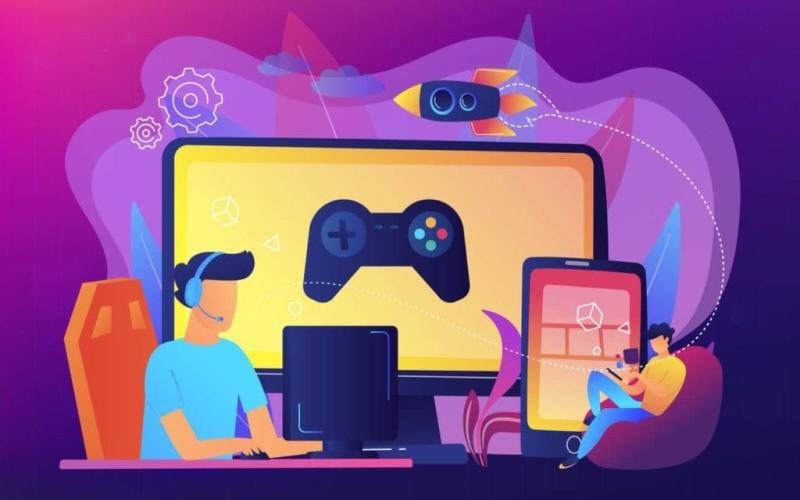Cross-platform online slot gacor gaming, where players on different devices can seamlessly play together in the same virtual worlds, represents a significant evolution in the gaming industry. This article explores the current state of cross-platform gaming, its benefits, challenges, and the potential future trends that could shape its development.
The Rise of Cross-Platform Gaming
Cross-platform gaming has gained momentum in recent years, driven by advancements in technology, changing consumer preferences, and the desire for inclusive gaming experiences. Traditionally, games were confined to specific platforms—PCs, consoles (like PlayStation and Xbox), or mobile devices (iOS and Android). Each platform had its own ecosystem and player base, limiting who could play together.
However, with the advent of cross-platform compatibility, barriers between platforms are breaking down. Games like “Fortnite,” “Minecraft,” and “Rocket League” have led the charge by allowing players on different devices to compete and collaborate in real-time. This interoperability not only enhances player engagement but also expands the reach and longevity of games, as communities can thrive across multiple platforms.
Benefits of Cross-Platform Gaming
The shift towards cross-platform gaming offers several compelling benefits for players, developers, and the gaming industry as a whole:
- Expanded Player Base: Cross-platform play enables a larger pool of players to connect and compete, fostering diverse and vibrant communities.
- Enhanced Flexibility: Players have the freedom to choose their preferred device without being limited by platform exclusivity, enhancing accessibility and convenience.
- Longevity of Games: Games with cross-platform support tend to have longer lifespans and higher player retention rates, as they can adapt to evolving player preferences and technological advancements.
- Economic Opportunities: Developers can reach broader audiences and monetize their games more effectively through cross-platform compatibility, leveraging in-game purchases and subscriptions across multiple platforms.
Technological Advancements Driving Cross-Platform Integration
Several technological advancements have been instrumental in enabling cross-platform gaming:
- Cloud Gaming: Cloud gaming services like Google Stadia, NVIDIA GeForce Now, and Xbox Cloud Gaming (formerly known as xCloud) allow players to stream games directly to their devices, regardless of hardware capabilities. This technology reduces the reliance on local hardware specifications, facilitating cross-platform play.
- Cross-Platform Game Engines: Game engines such as Unity and Unreal Engine offer robust cross-platform development tools and frameworks. Developers can create games that run smoothly across different devices with minimal additional effort, streamlining the development process.
- Standardization of APIs: Standardized application programming interfaces (APIs) and protocols (such as DirectX, Vulkan, and WebGL) ensure compatibility between diverse hardware and operating systems, facilitating seamless cross-platform experiences.
Challenges and Considerations
Despite its numerous benefits, cross-platform gaming presents challenges and considerations for developers and players alike:
- Technical Hurdles: Ensuring smooth gameplay across different hardware configurations, input methods, and network conditions requires rigorous testing and optimization.
- User Experience: Maintaining consistency in user interfaces, performance, and game balance across platforms is crucial to delivering a cohesive gaming experience.
- Security and Fairness: Implementing effective anti-cheat measures and ensuring fair gameplay are essential to maintaining the integrity of cross-platform gaming environments.
- Regulatory and Legal Issues: Compliance with regional regulations, data protection laws, and platform-specific policies can pose legal challenges for developers operating in multiple jurisdictions.
Future Trends in Cross-Platform Gaming
Looking ahead, several trends are likely to shape the future of cross-platform gaming:
- Enhanced Cross-Platform Social Features: Integration of social media platforms, voice chat, and cross-platform messaging services will enhance communication and collaboration between players on different devices.
- Augmented Reality (AR) and Virtual Reality (VR): Advancements in AR and VR technologies may lead to immersive cross-platform gaming experiences that blend virtual and physical environments, offering new dimensions of gameplay and interaction.
- Blockchain and NFT Integration: The adoption of blockchain technology and non-fungible tokens (NFTs) could enable players to own and trade virtual assets across platforms securely, enhancing digital ownership and in-game economies.
- Artificial Intelligence (AI) and Machine Learning: AI-driven matchmaking, player behavior analysis, and dynamic game adaptation based on player preferences could personalize and optimize cross-platform gaming experiences.
Conclusion
In conclusion, cross-platform online gaming represents a transformative shift in the gaming industry, offering unprecedented opportunities for collaboration, innovation, and community building. As technology continues to evolve and consumer expectations evolve with it, developers must navigate the challenges of technical integration, user experience design, and regulatory compliance to unlock the full potential of cross-platform gaming.
The future of cross-platform gaming promises to be dynamic and inclusive, blurring the lines between different devices and gaming communities. By embracing interoperability, leveraging emerging technologies, and prioritizing user engagement and security, the gaming industry can continue to push the boundaries of what is possible in interactive entertainment, creating memorable experiences for players worldwide.


